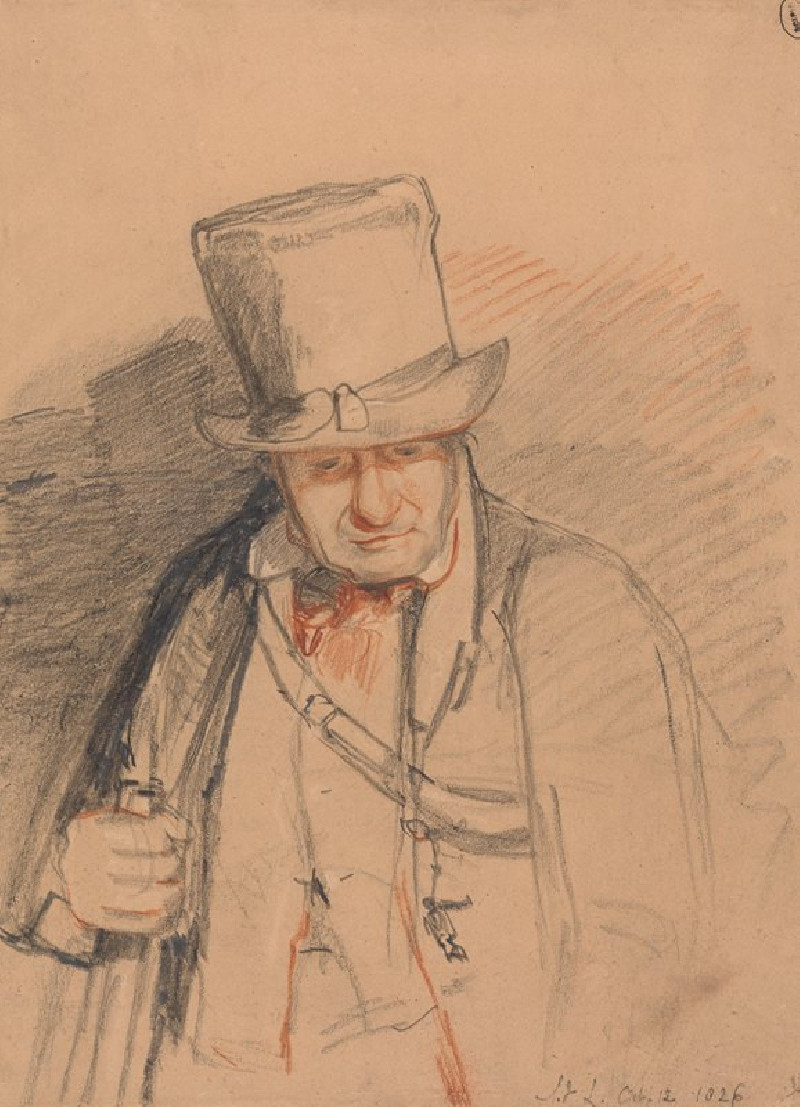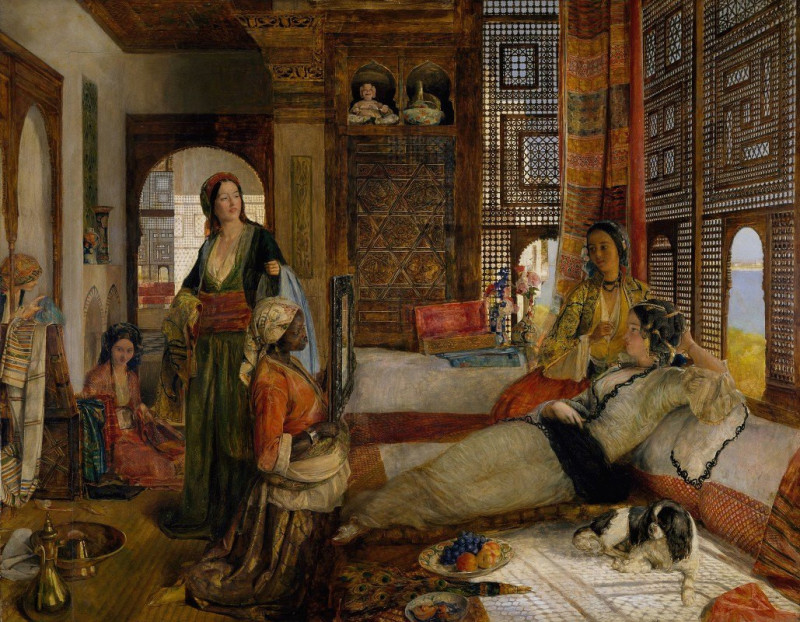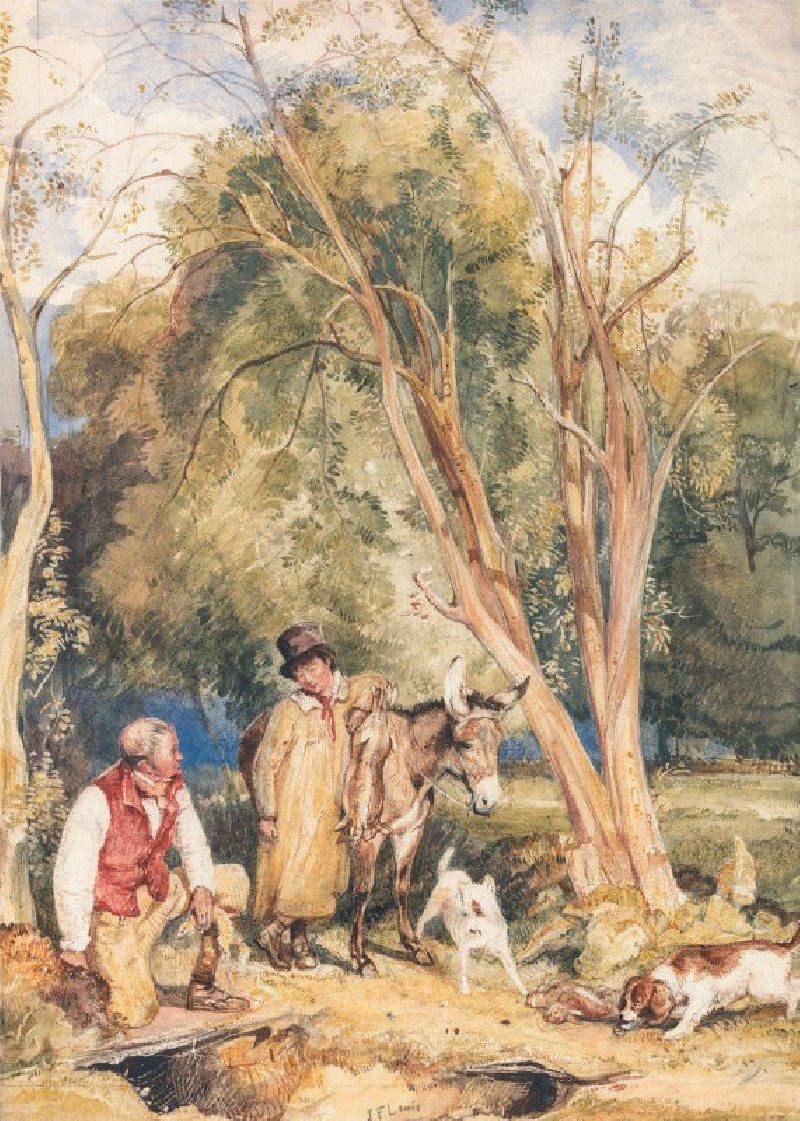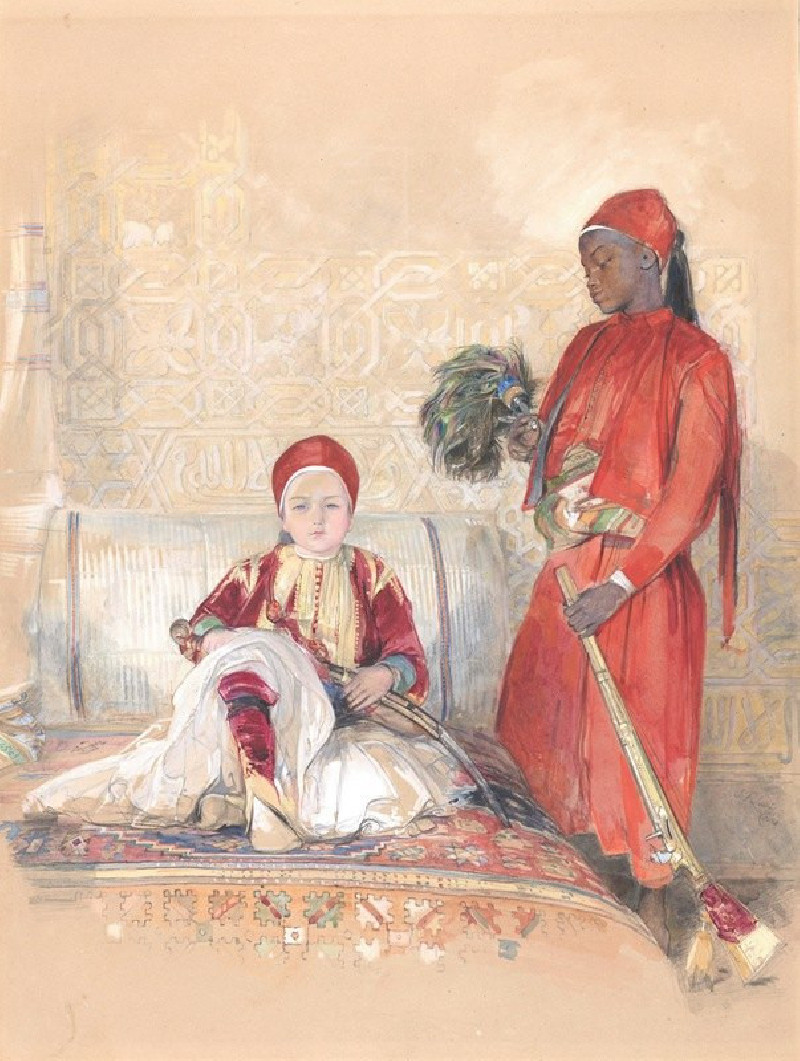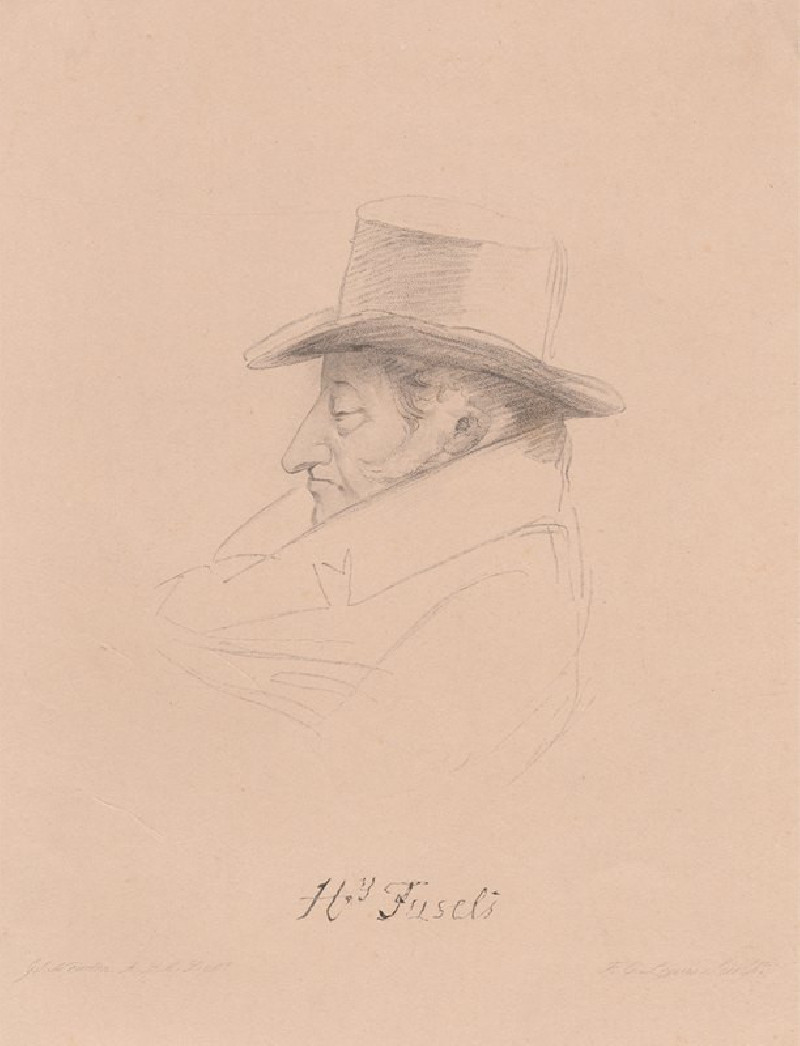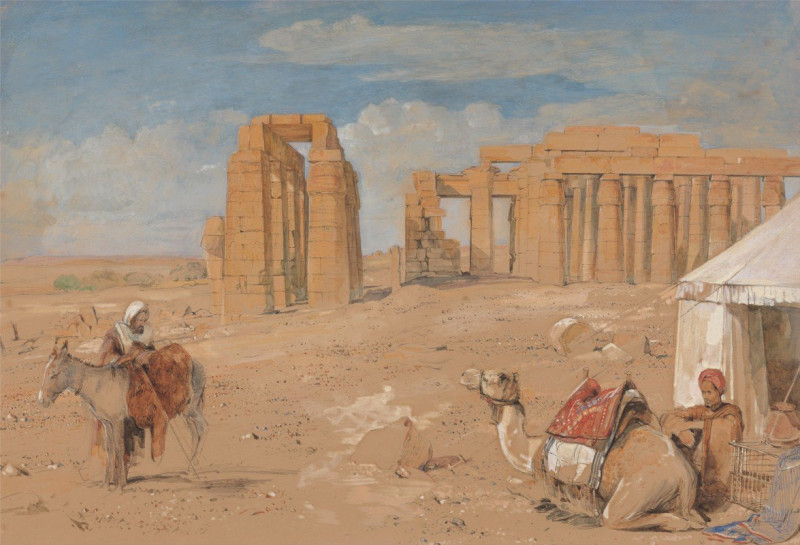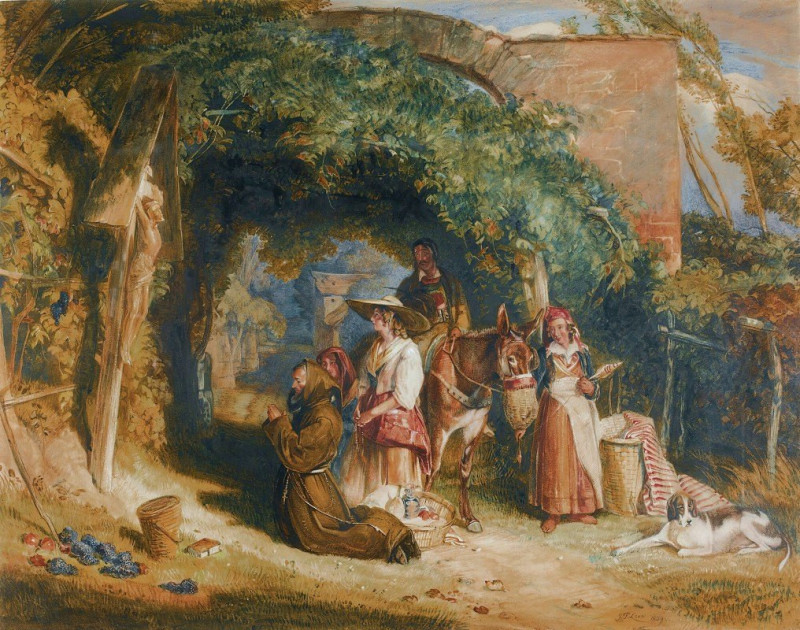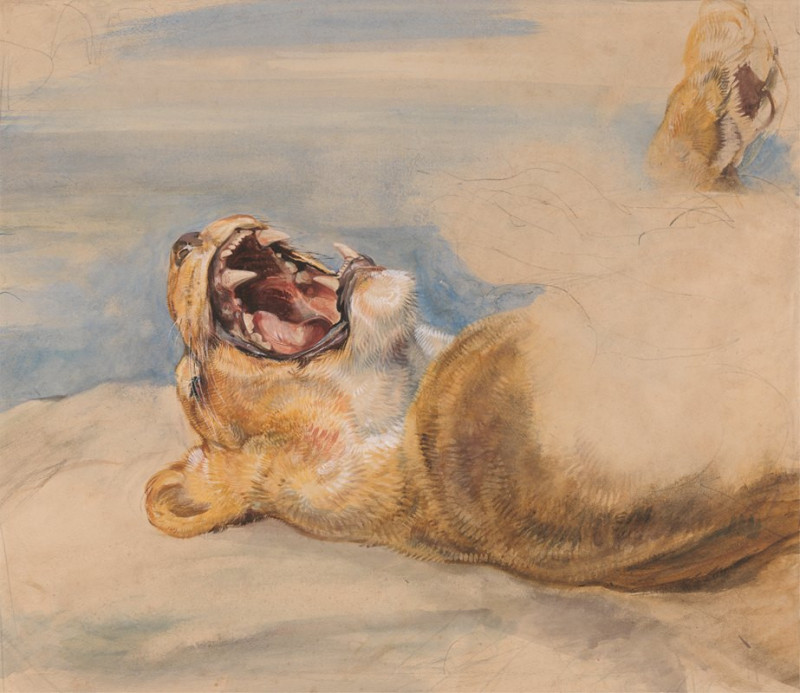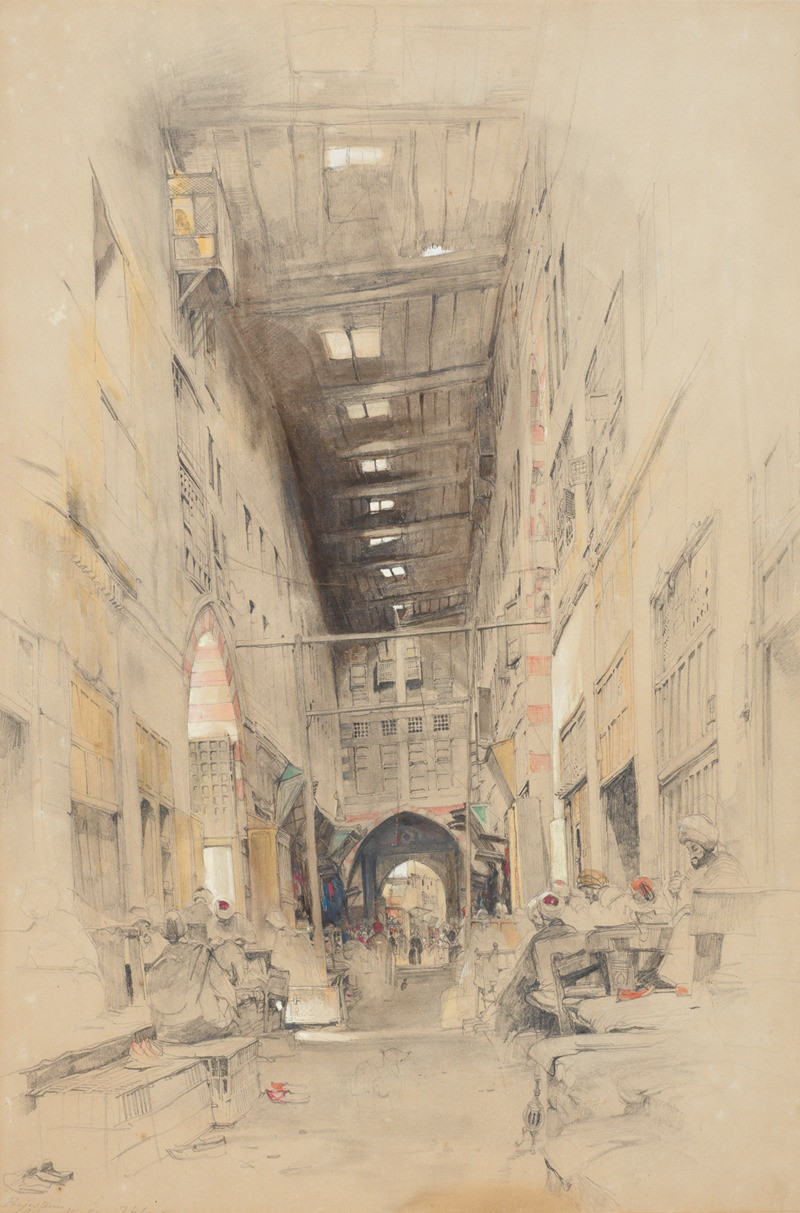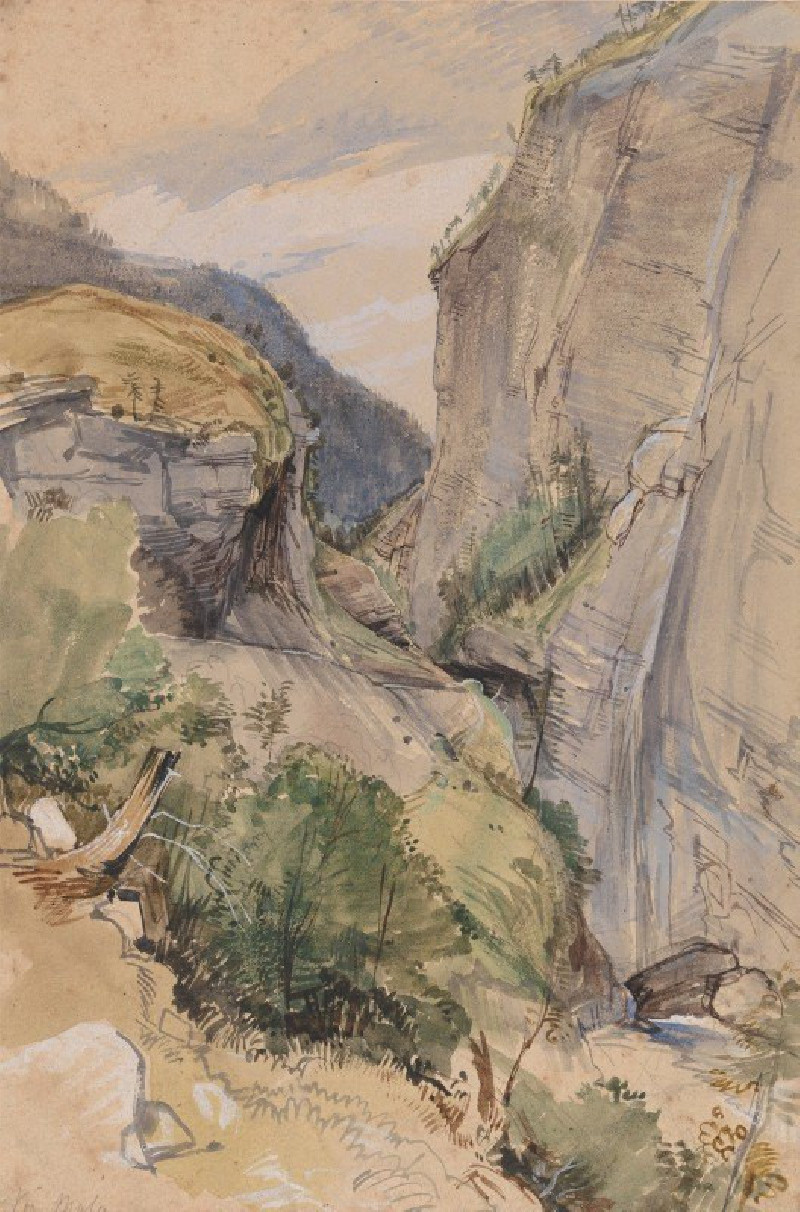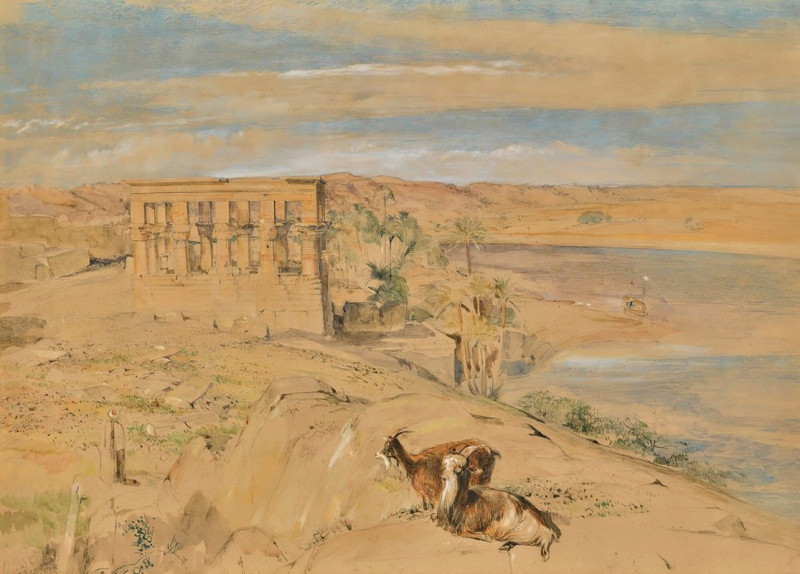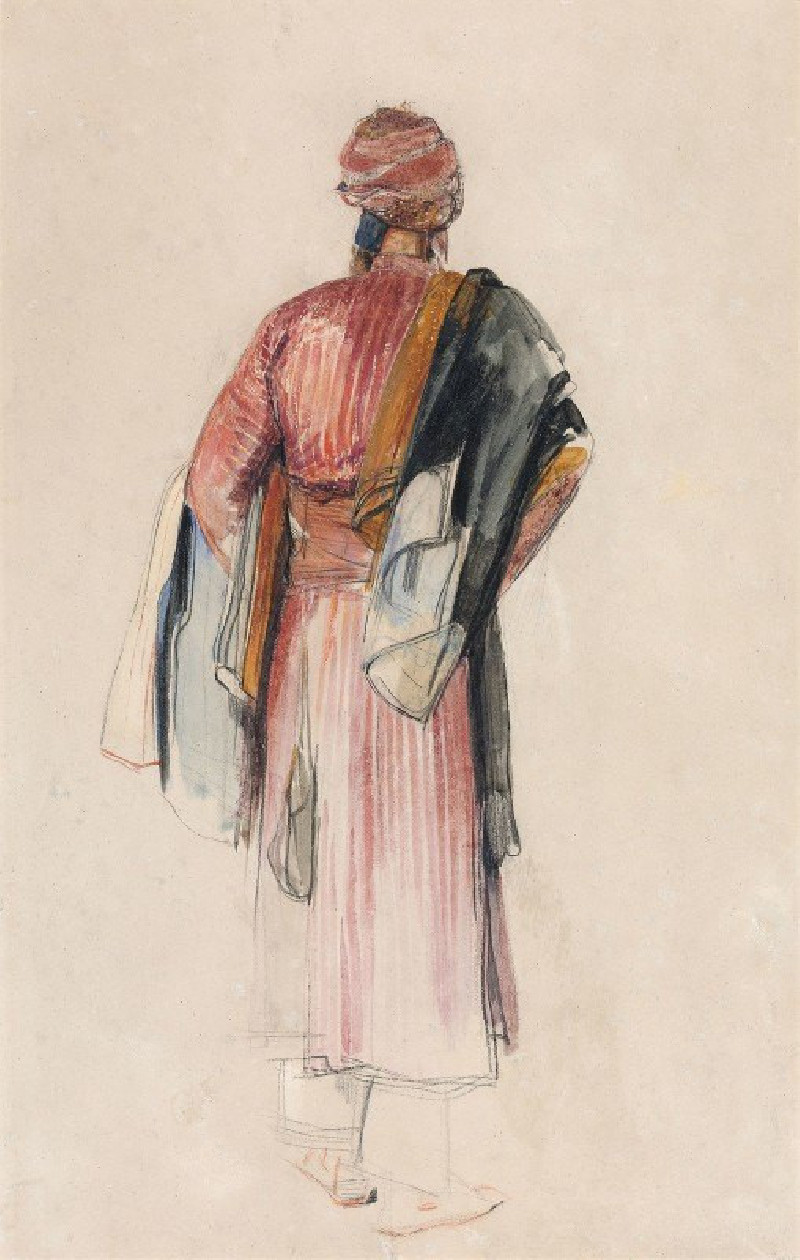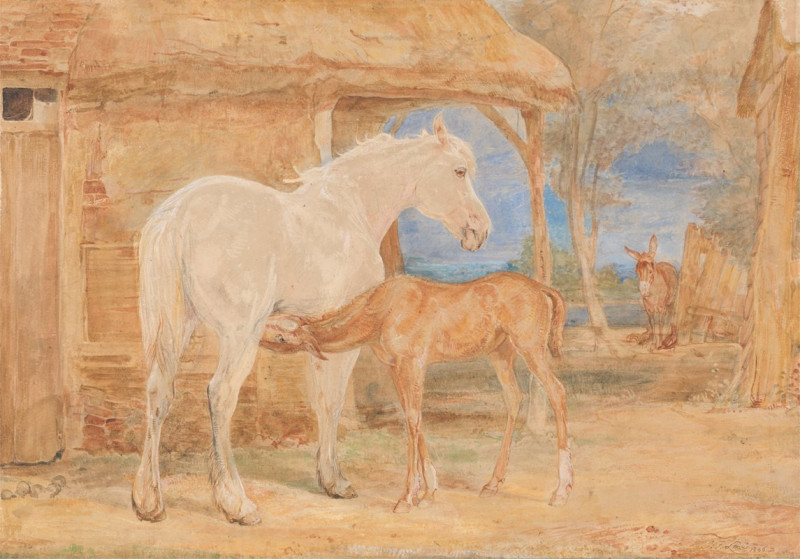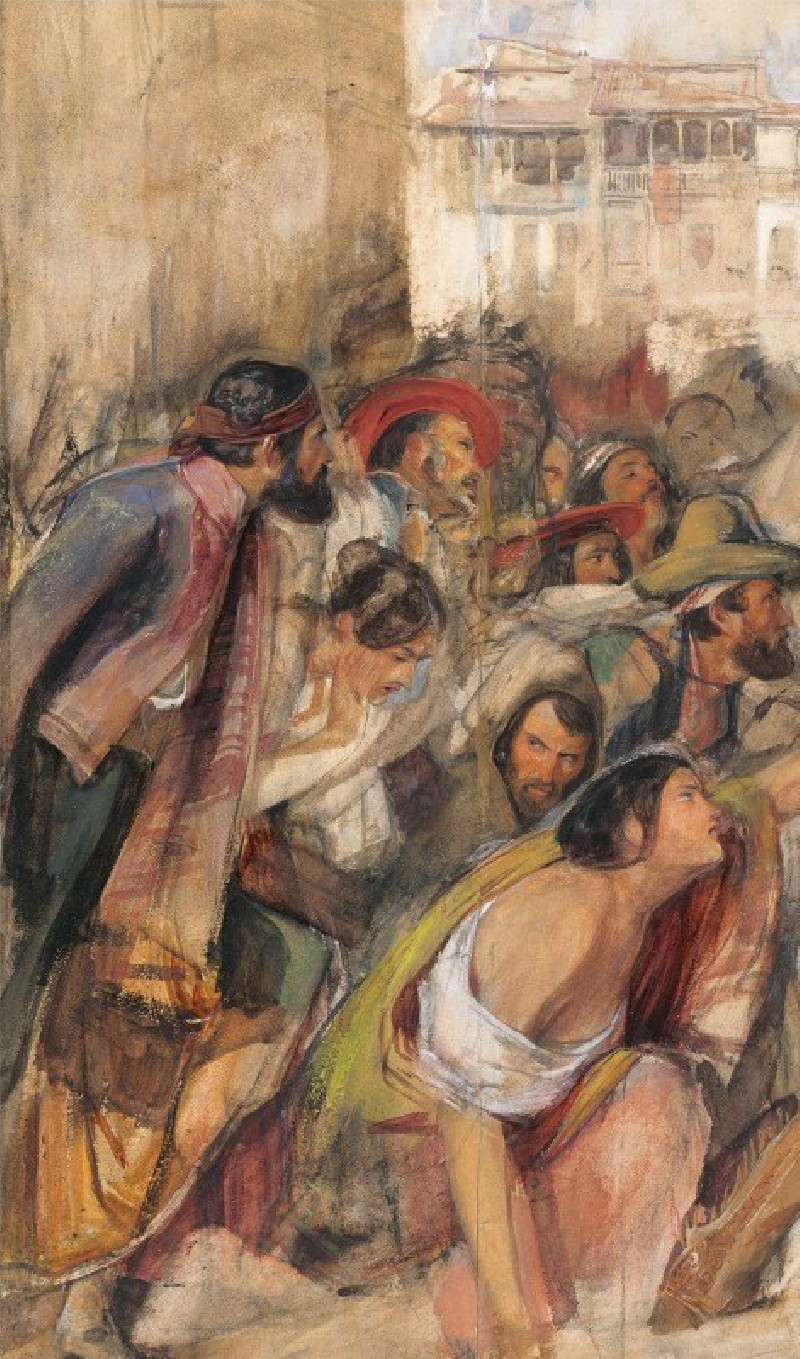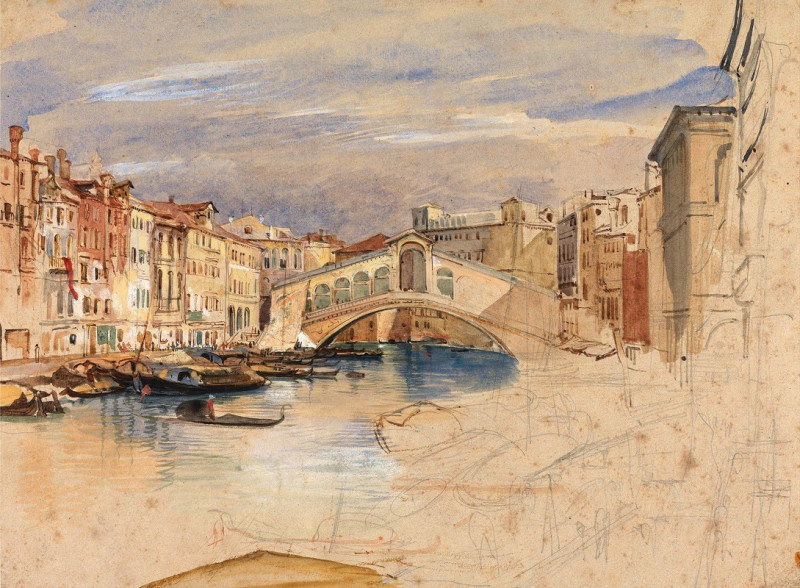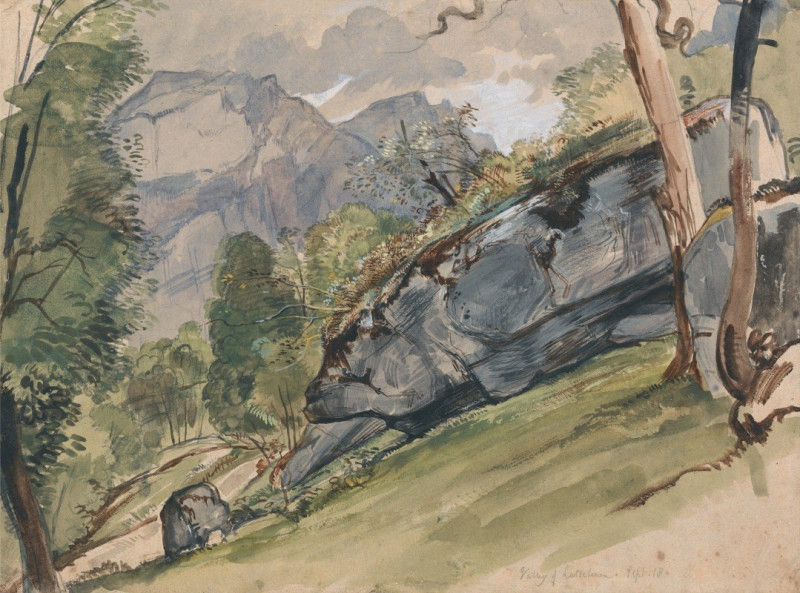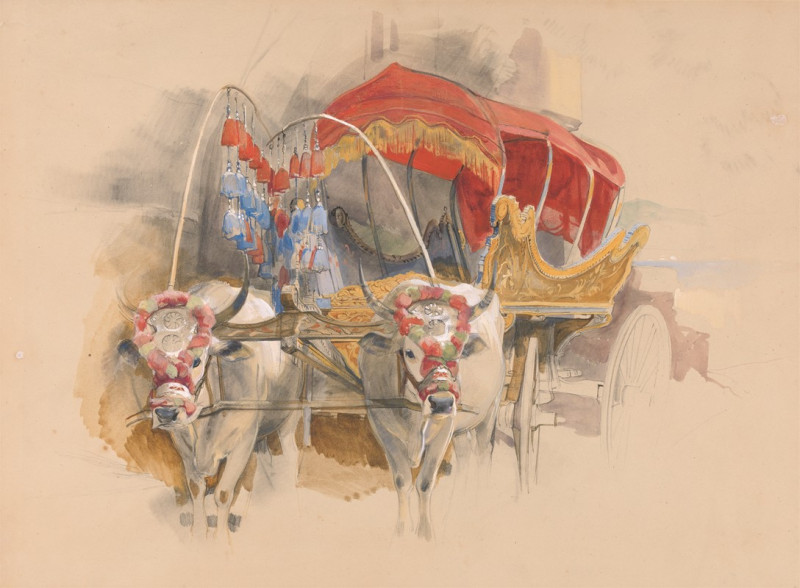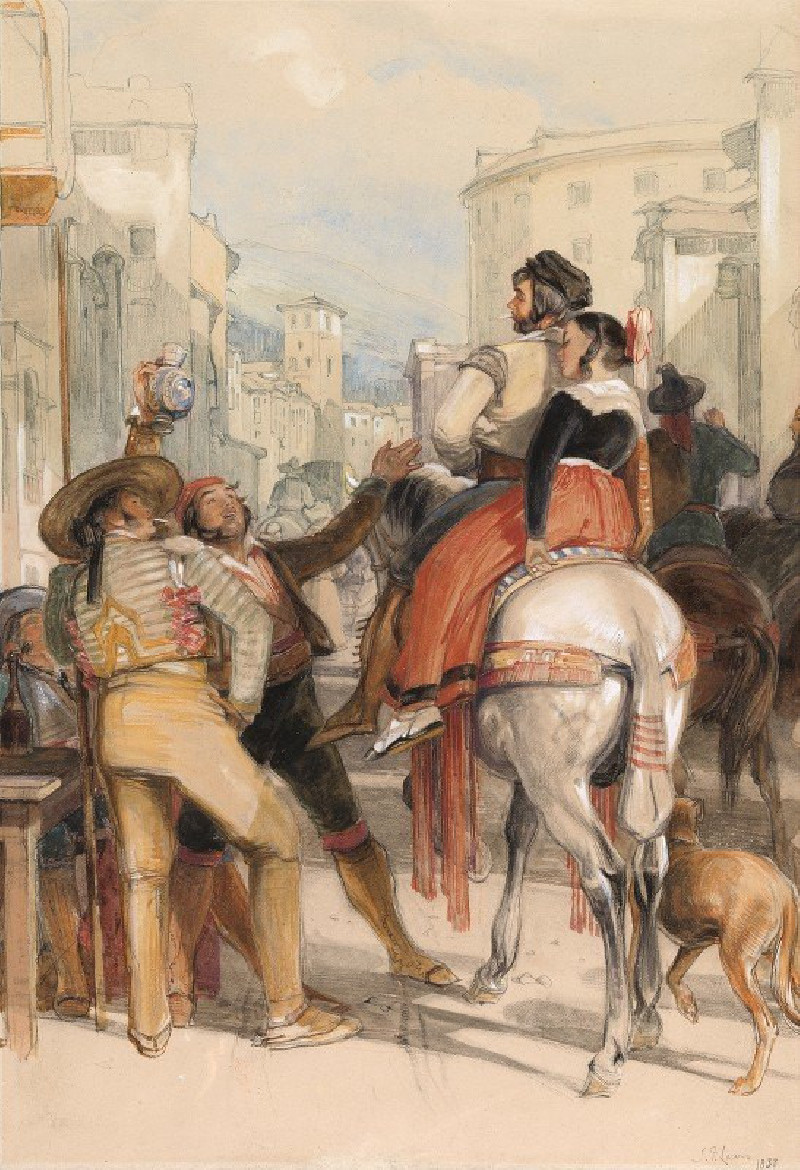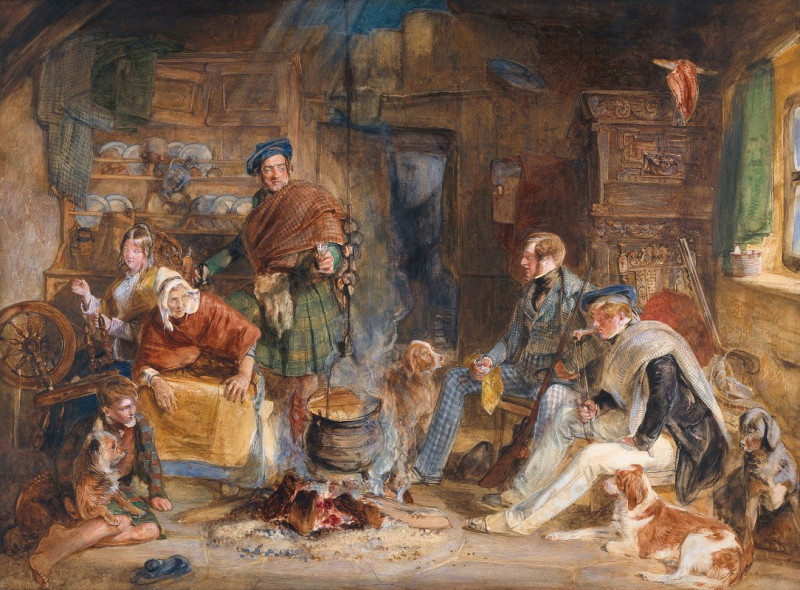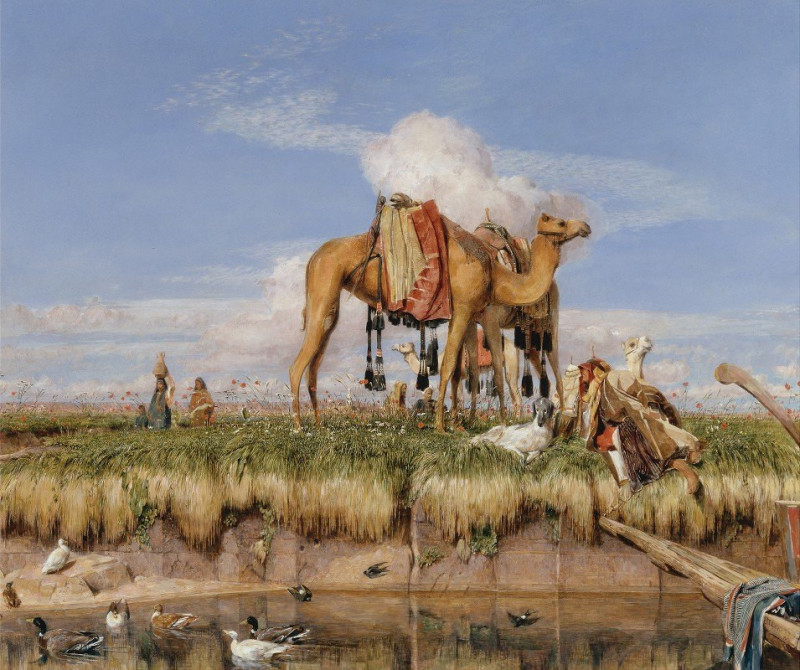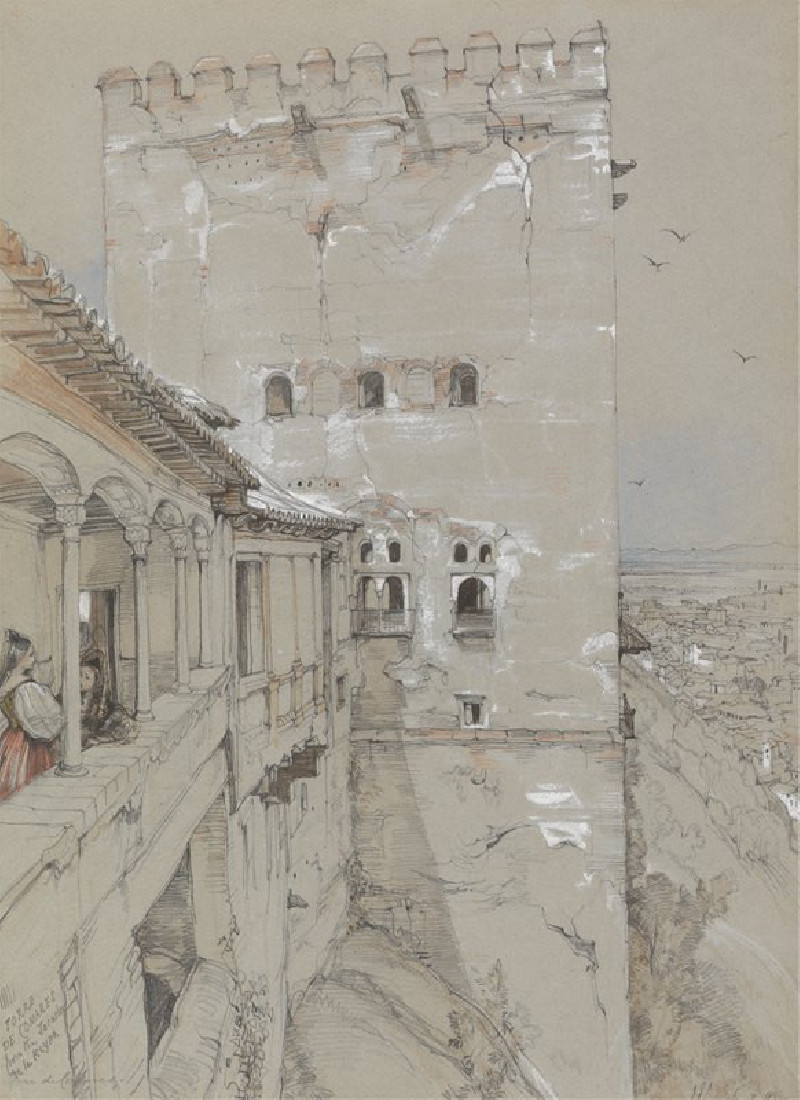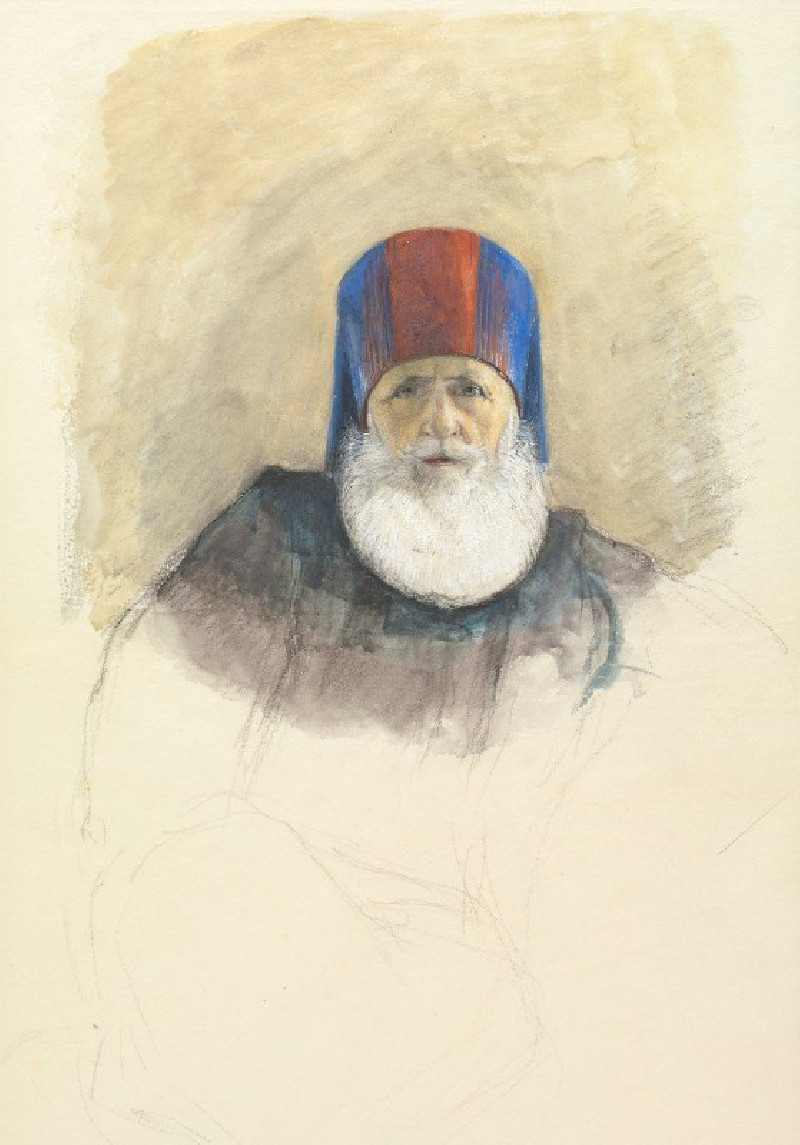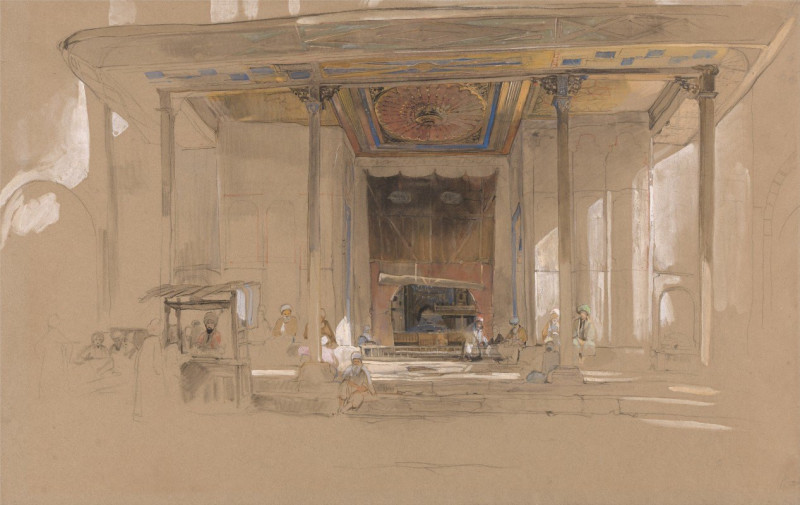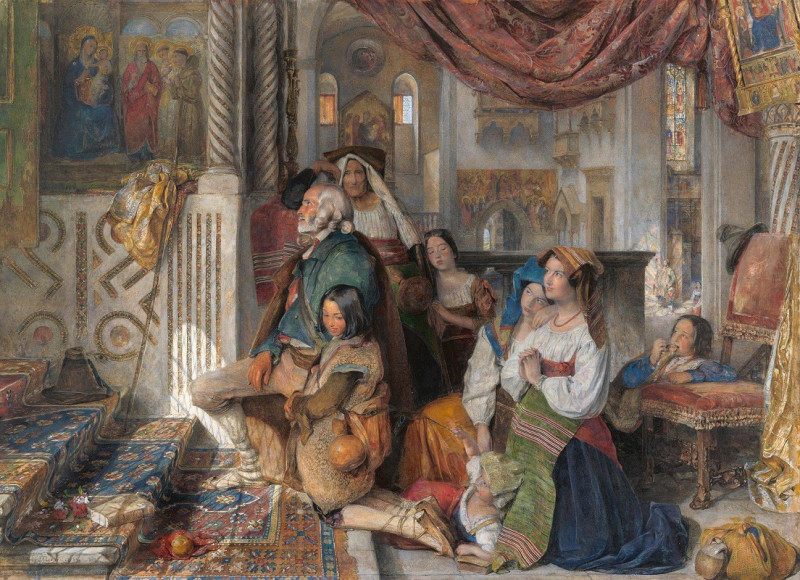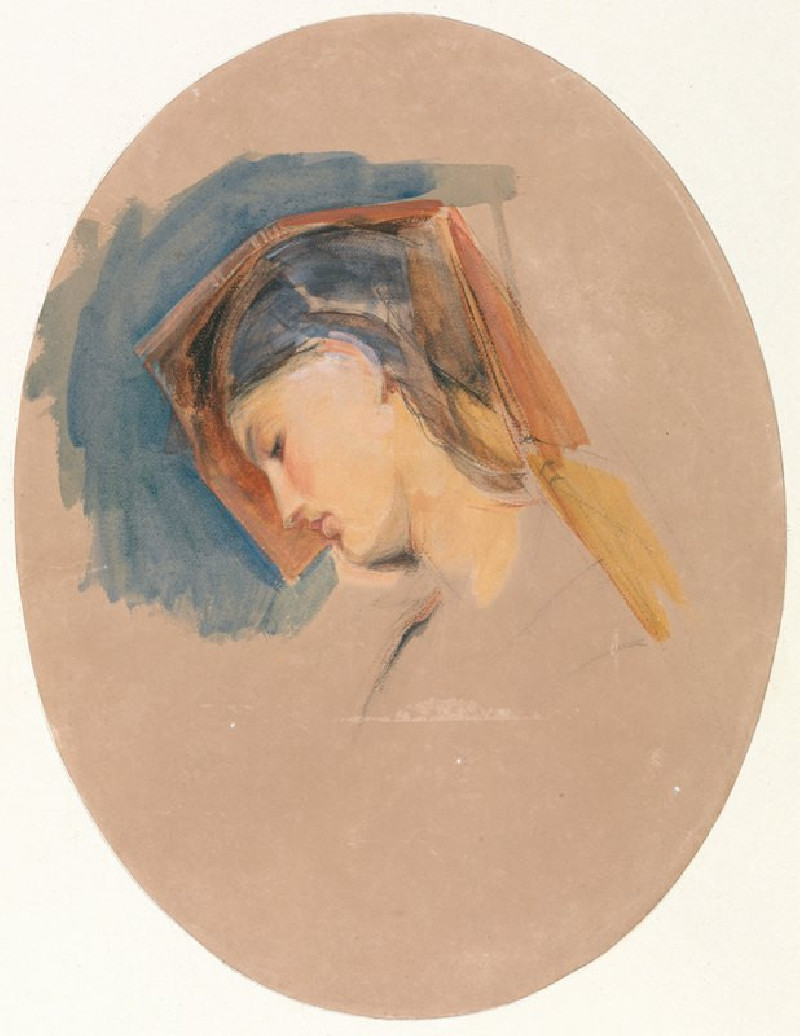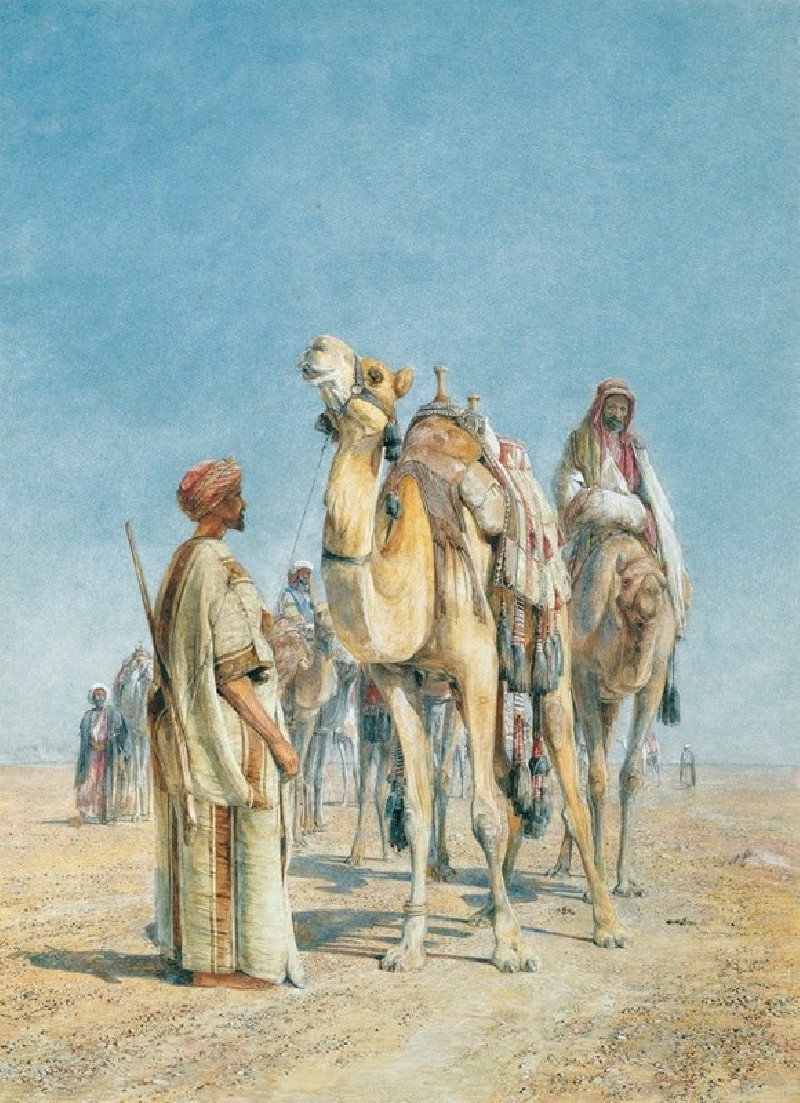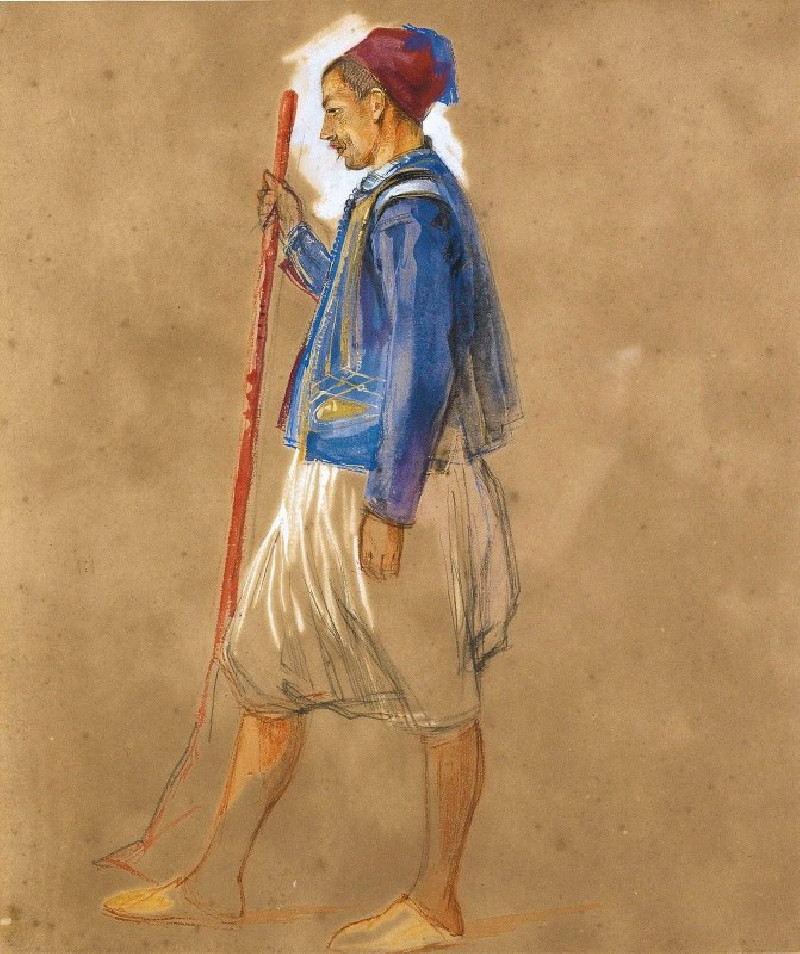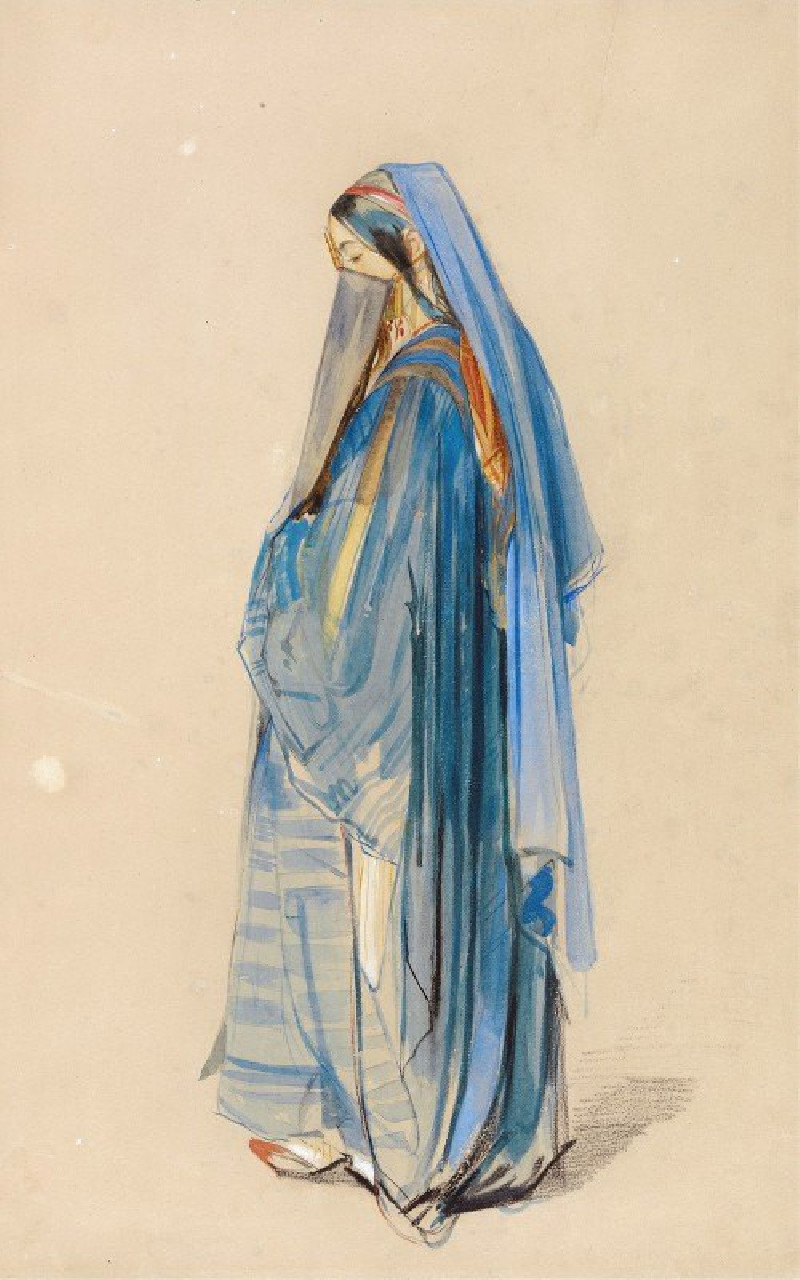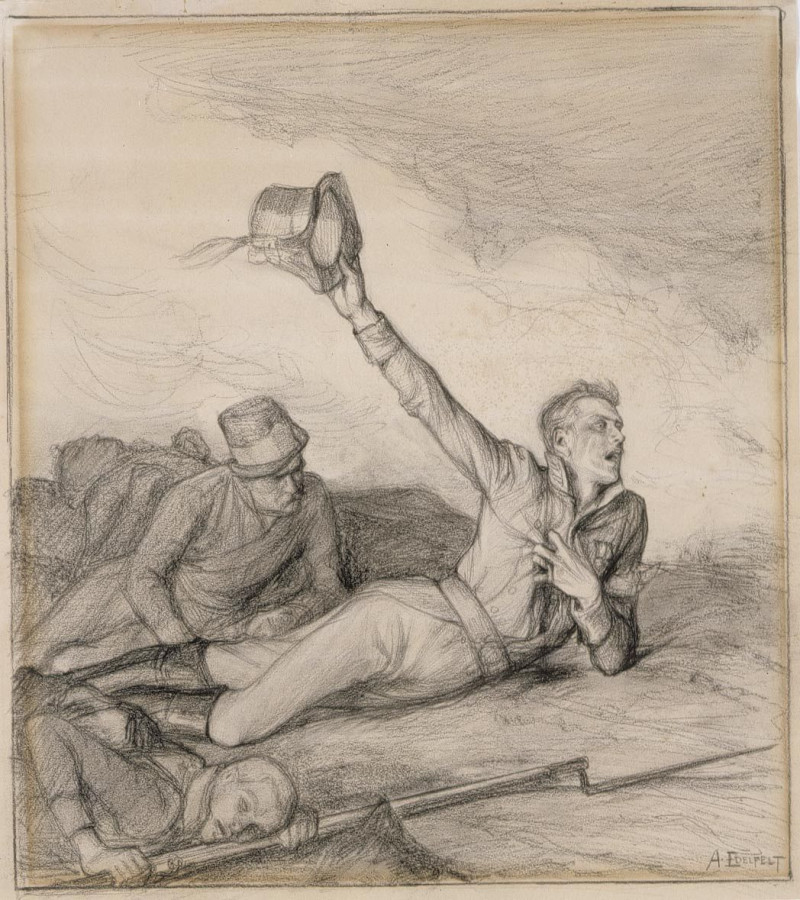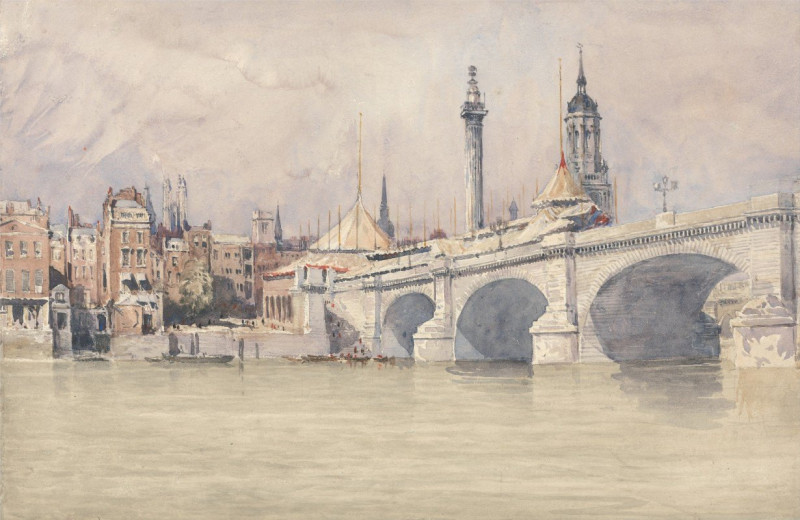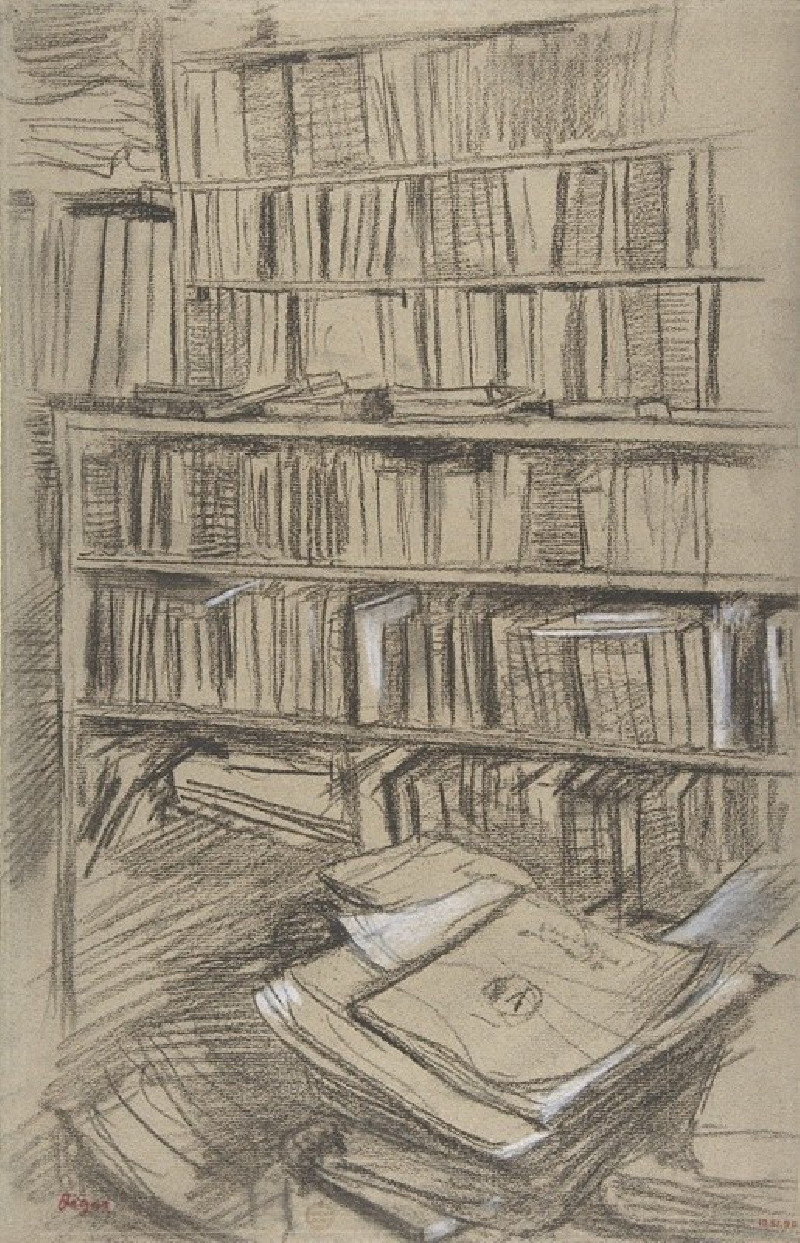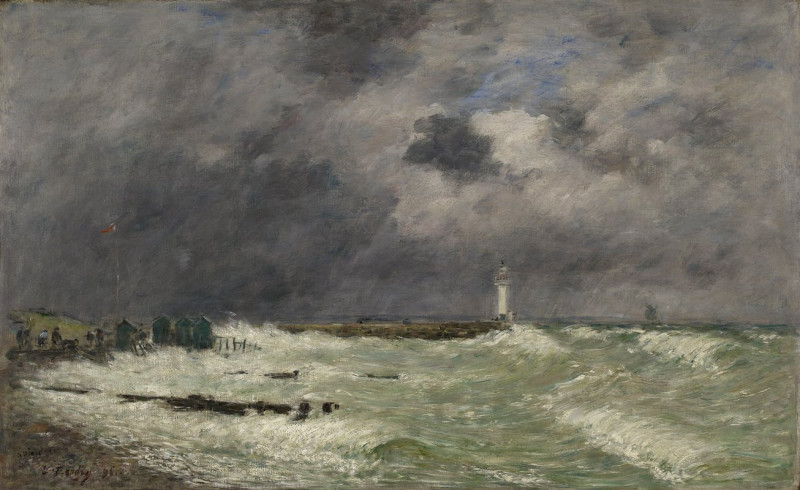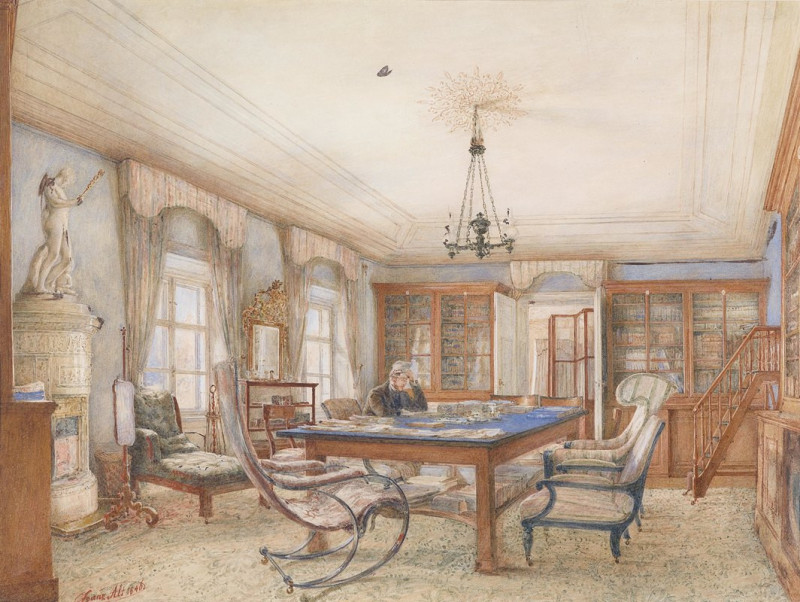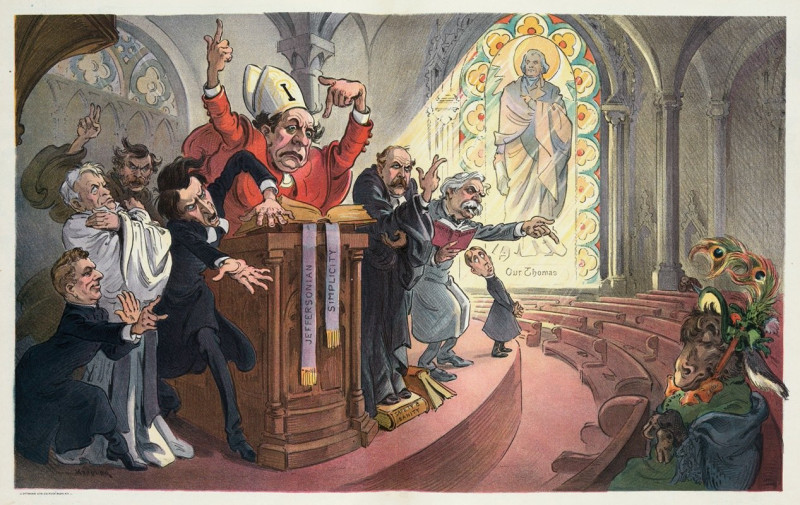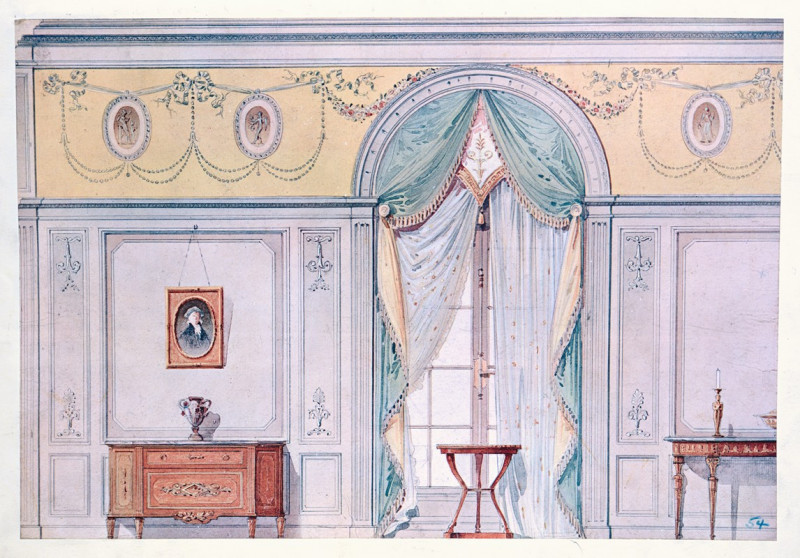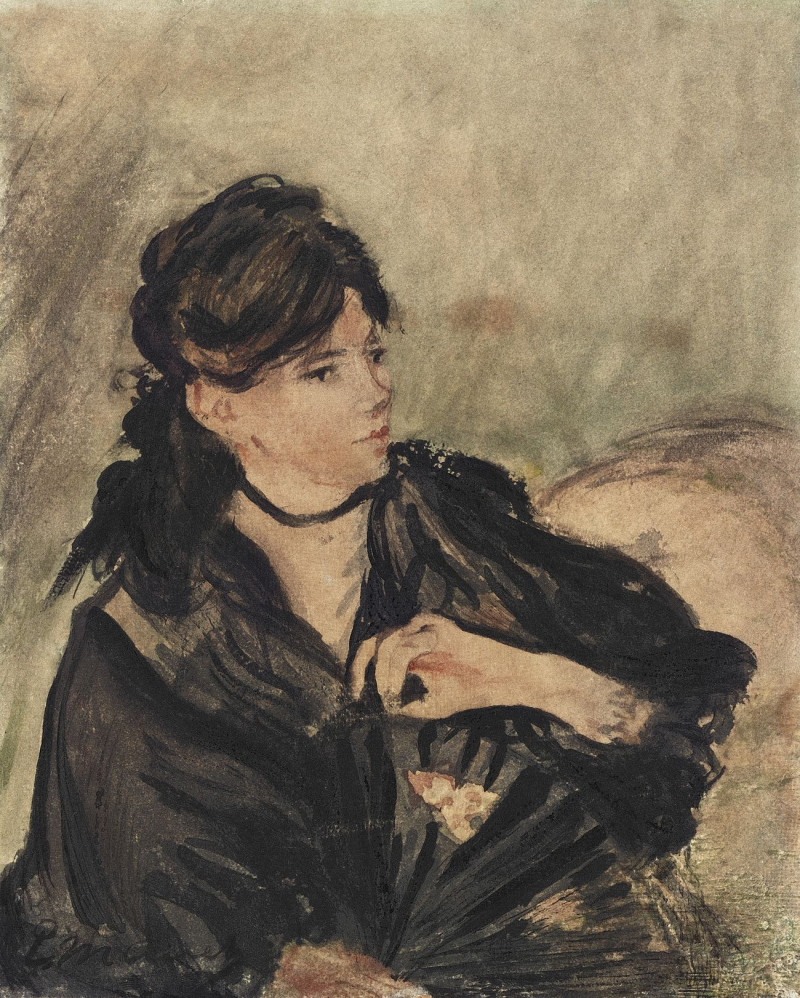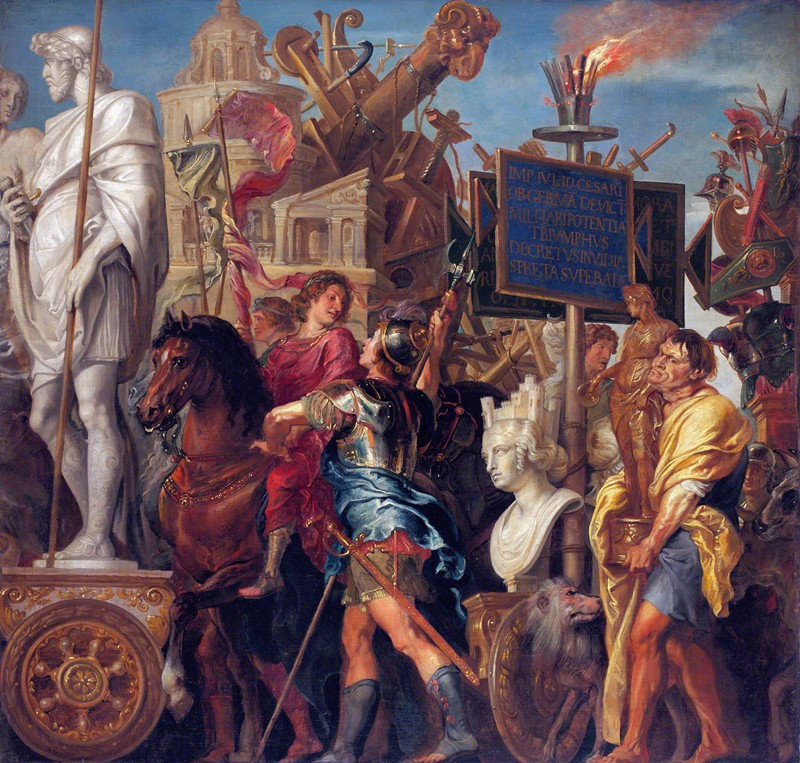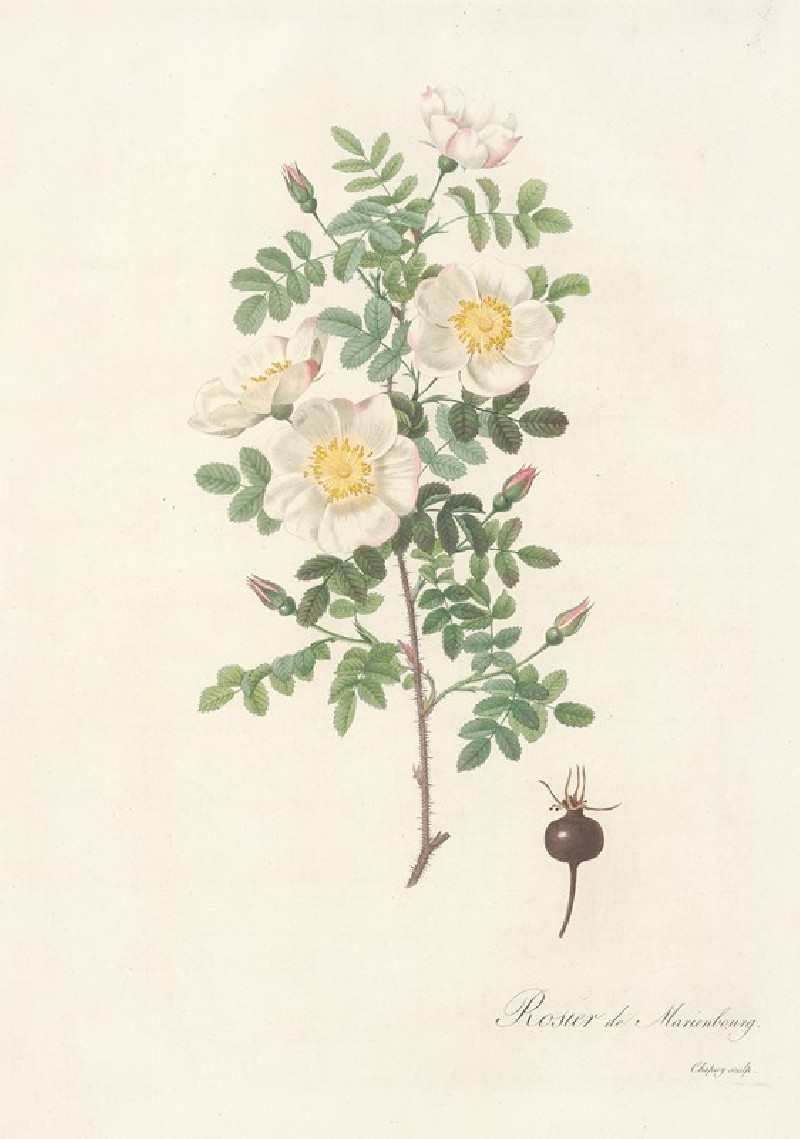A Head Keeper, Windsor Castle (1826)
Technique: Giclée quality print
Recommended by our customers
More about this artwork
In the compelling sketch "A Head Keeper, Windsor Castle," created in 1826, artist John Frederick Lewis captures a moment that feels both candid and strikingly intimate. The subject of the drawing is a man portrayed from the chest up, his features intensely rendered with a combination of boldness and subtlety that speaks to Lewis’s skill with the pencil and chalk.The man, a head keeper at Windsor Castle, is dressed in attire appropriate to his station, featuring a high-collared coat adorned with visible buttons and a cravat. His expression is serious and somewhat wearied, possibly reflecting the responsibilities and daily rigors associated with his role. The distinctive high top hat further emphasizes his social role and the fashion of the era.Lewis’s use of light and shadow, alongside the reddish-brown and dark charcoal hues, enhances the textural details of the man’s clothing and the tired lines of his face. This portrait not only serves as a historical snapshot of a person and profession from the 1820s but also as a testament to the artist's finesse in portraying human emotions and social contexts with minimal yet powerful strokes.
Delivery
Returns
John Frederick Lewis was an English Orientalist painter. He specialized in Oriental and Mediterranean scenes in detailed watercolour or oils, very often repeating the same composition in a version in each medium. He lived for several years in a traditional mansion in Cairo, and after his return to England in 1851 he specialized in highly detailed works showing both realistic genre scenes of Middle Eastern life and more idealized scenes in upper class Egyptian interiors with little apparent Western influence.

